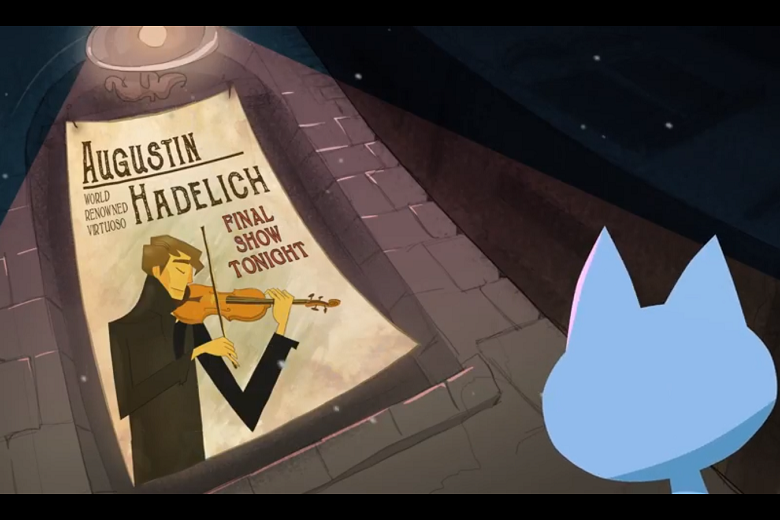NOVEMBER 2, 2021 – One of the joys of having our six-year-old granddaughter visit is teaching her to pronounce, “Paganini.” This was in answer to her question, “What’s the music in the cat video?”
The “cat video” is Fantasia dei Gatti (“Fantasia of the Cats”), a cartoon produced by Augustin Hadelich, the Italian-born/reared son of German parents living in Tuscany, and who’s since become an American teaching at the Yale School of Music and concertizing around the world. My sister had introduced the video to me last March, and since then, at our granddaughter’s request, I’ve replayed it 10,000 times.
She likes to dance to it with my wife and me and whoever else is present. Each of us has an established role. I’m the violinist, fortunately in a “pretend” mode—Paganini Caprice No. 17 (of 24) is a finger-and-bow-twisting piece written strictly for virtuosi of the highest order. (Niccolò Paganini (1782 – 1840) was an Italian violinist/composer who played like the devil and bedazzled audiences throughout Europe.)
I’m eager to encourage our granddaughter’s artistic proclivities, mainly to foster her imagination and creativity. This process is a two-way street . . .
Yesterday evening after half-a-dozen rounds of Fantasia dei Gatti and hearing our grand-daughter’s mastery of the name, “Paganini,” I researched Augustin Hadelich, a grand-master of the violin, but whose name had been unknown to me before my sister’s email bearing the link to the “cat video.”
I watched several videos of Herr/Signor/Mister Hadelich performing Paganini—and Bach, Mendelssohn, and Sibelius. They were riveting. One thing led to another, and soon I was listening to a collaborative video of 14 international violinists—including Hadelich—performing Bach’s “Chaconne” (from Partita No. 2 in d minor). It was produced soon after last year’s lockdown and comprises perfectly spliced sequences featuring the 14 performers—each recorded at home.
The music was a reminder that in this troubled world, humanity has unlimited capacity to create and collaborate in a manner we’d be quick to show aliens who were to land amidst our foibles and failures.
None of the performers, however, had started with a clean slate. The music was composed almost three centuries ago (1723), about the time that Hadelich’s violin was made by Bartolomeo Giuseppe “del Gesù” Guarneri. Each of the players had intense training by an older instructor, who, in turn, had learned the art of violin-playing from a previous master. The performers’ collaboration was facilitated by cutting-edge technology with a long provenance. Our creativity is stitched into a fabric without edges, sans beginning or end.
(I was so impressed by the Chaconne video that in a dream last night when I encountered Walter Mondale standing alone beyond a crowd, I told him enthusiastically about the musical gem. Sadly, he was stone deaf and couldn’t understand a word I said. Only upon waking did I remember: Oh yeah, he’s dead . . . unlike Bach.)
This morning, our granddaughter, who, with her dad had stayed overnight, asked me, “Can we listen to Paganini?” Bach would have to wait.
(Remember to subscribe to this blog and receive notifications of new posts by email.)
© 2021 by Eric Nilsson
